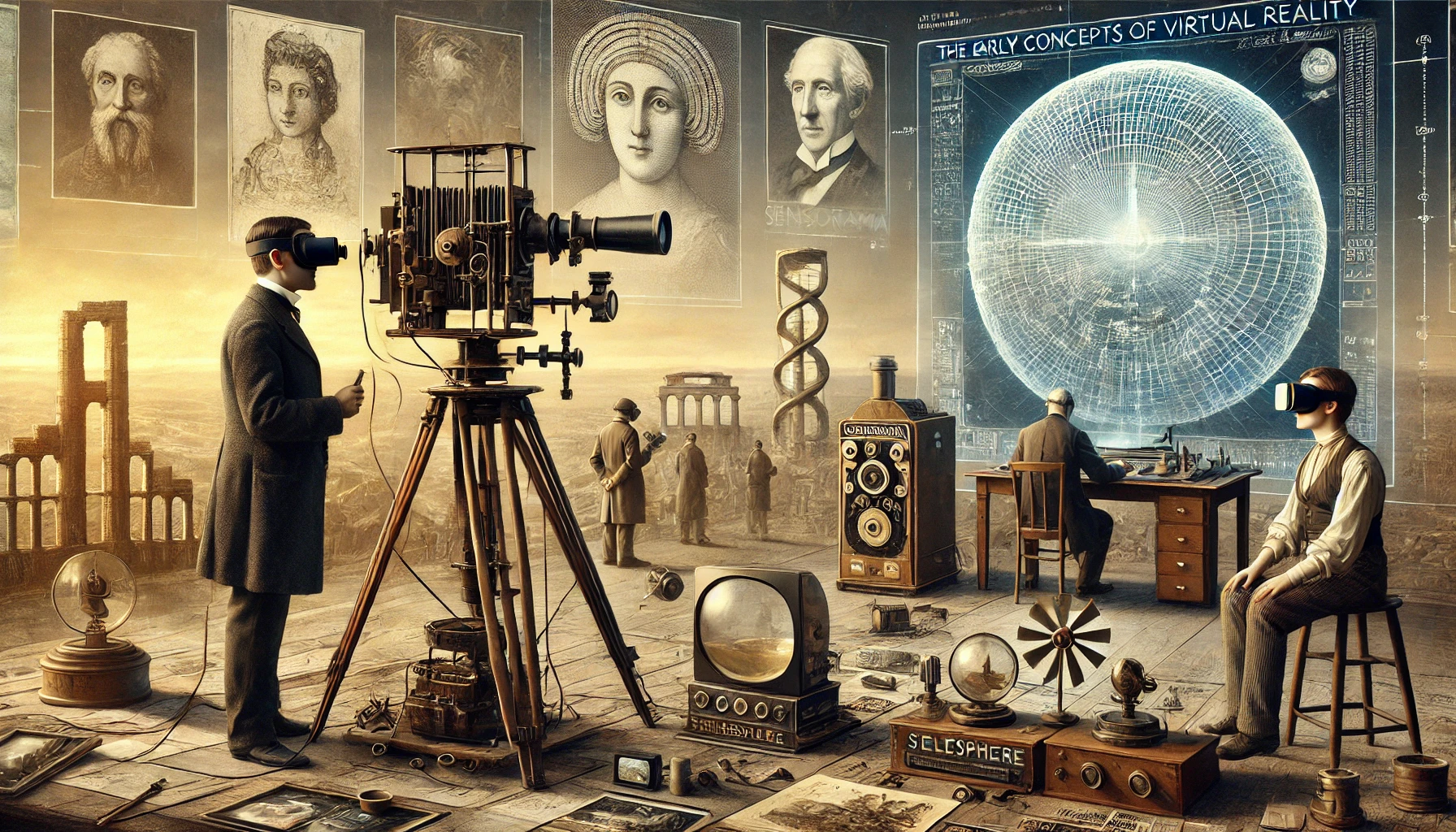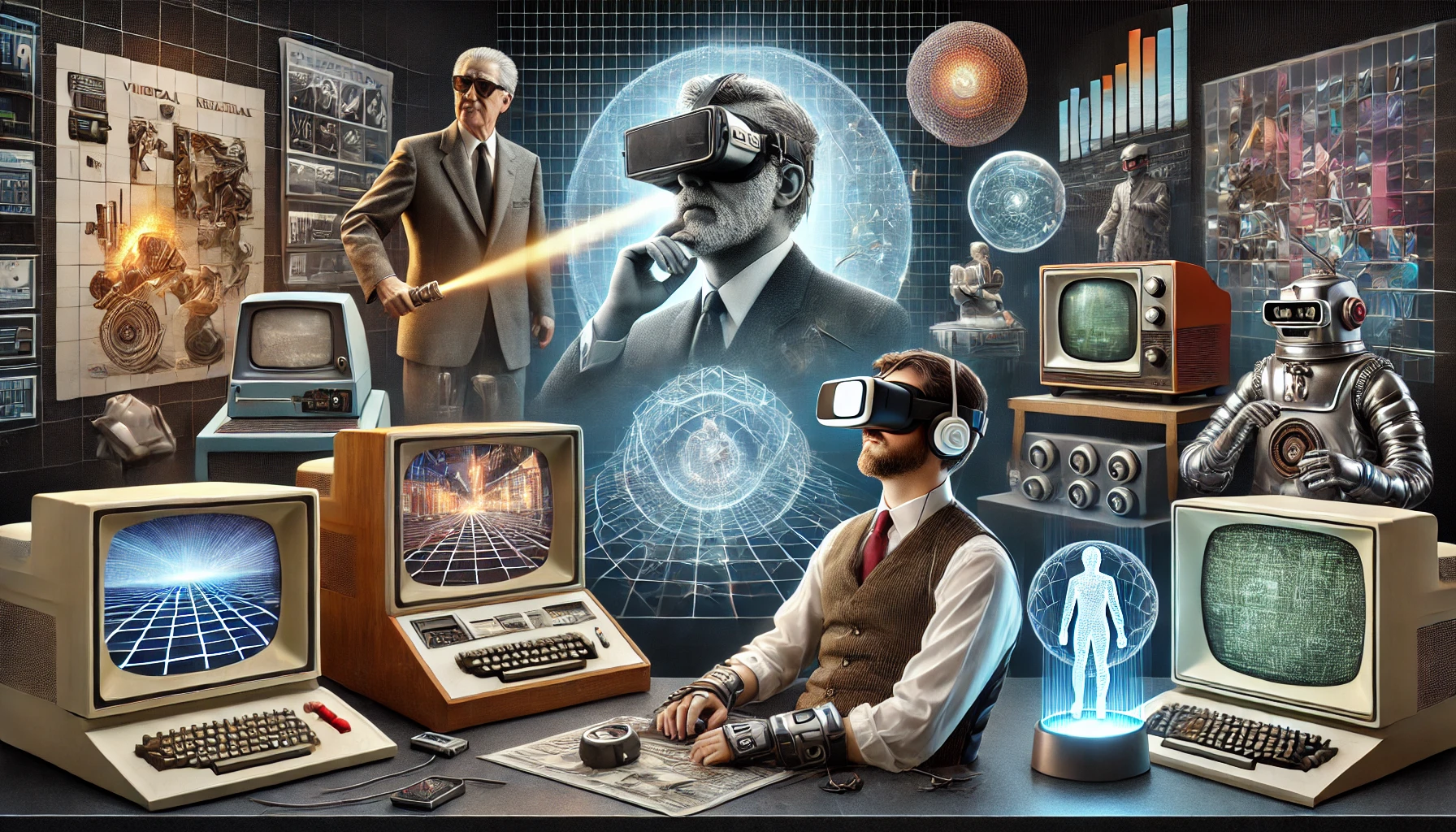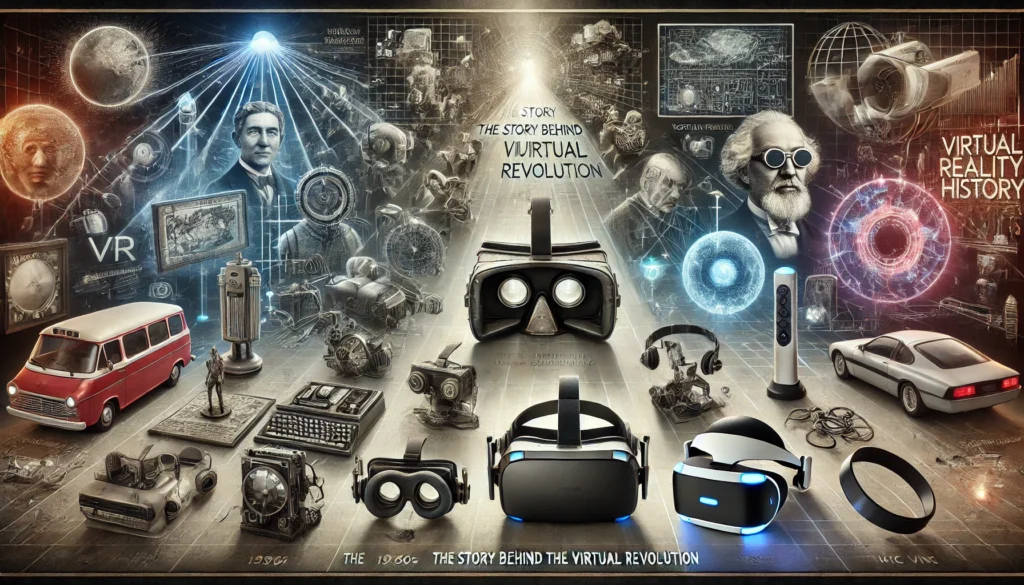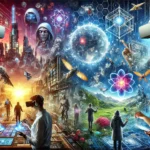Introduction
Virtual Reality (VR) has revolutionized the way we interact with technology, creating immersive experiences that blur the line between reality and digital worlds. To truly understand the significance of this technology, we must delve into virtual reality history. This journey takes us from early inventions and science fiction dreams to today’s cutting-edge VR systems that shape industries worldwide. The evolution of VR is not just about technology but also about human imagination and the desire to break free from physical limitations.
Over the decades, VR has shifted from being a niche concept to a mainstream tool used in gaming, healthcare, education, and even social interactions. This article will guide you through the fascinating timeline of virtual reality history, the key milestones, and the pioneers who shaped this technology. The growth of VR is a story of innovation, creativity, and the relentless pursuit of creating alternate realities. Understanding its history provides valuable insight into its current applications and its potential future.
The virtual revolution is not just about hardware or software advancements; it’s about how these innovations impact our daily lives, industries, and even our perceptions of reality. As we explore the journey of VR, it becomes clear that it is much more than just a technological tool—it is a transformative force shaping human interaction and creativity. Virtual reality history serves as a guide to understanding the endless possibilities this technology offers.

The Early Concepts of Virtual Reality
Pre-Computer Era:
Before computers, the seeds of virtual reality were planted through inventions and creative storytelling.
- Ancient Immersion Techniques: Panoramic paintings, dioramas, and immersive theater performances gave people the feeling of being part of alternate worlds.
- Stereoscope (1838): Created by Sir Charles Wheatstone, the stereoscope allowed users to view images in 3D, creating a sense of depth and realism.
- These early devices set the stage for more sophisticated virtual experiences.
- Human fascination with creating alternate realities has always been evident in art, literature, and early mechanical inventions.
- The use of visual tricks and perspective played a significant role in creating the illusion of alternate realities.
- These initial ideas became the foundation for what would later evolve into advanced virtual reality systems.
Birth of Immersive Devices:
The mid-20th century introduced the first attempts at fully immersive experiences.
- Sensorama (1957): Invented by Morton Heilig, Sensorama was one of the first machines designed to engage multiple senses, including sight, sound, smell, and touch.
- Telesphere Mask: Considered one of the first head-mounted displays (HMDs), this device offered stereoscopic visuals.
- These devices, while primitive by modern standards, laid the foundation for future VR technology.
- Morton Heilig’s vision of multi-sensory immersion was groundbreaking and remains a fundamental concept in VR design today.
- These inventions demonstrated the potential of merging technology with sensory experiences, setting the stage for modern VR.
- Virtual reality history began gaining traction as engineers and inventors saw the potential for creating fully immersive experiences.
The Concept of Cyberspace:
The 1980s saw the introduction of cyberspace in literature.
- William Gibson’s Neuromancer (1984): The novel introduced the term ‘Cyberspace’ and described a world where people could interact with a virtual digital landscape.
- Gibson’s vision inspired countless technologists and writers to explore the potential of virtual spaces.
- The idea of a shared, interactive digital world became a cornerstone of VR development.
- Cyberspace shifted public perception of VR from science fiction to a tangible technological goal.
- Literature played a significant role in embedding the concept of virtual reality into popular culture and imagination.
- Virtual reality history reflects how fictional visions of cyberspace became blueprints for real-world technological innovation.
These early concepts highlight humanity’s desire to create alternate realities long before the digital revolution. The foundations laid during this era continue to inspire advancements in virtual reality systems.

The Birth of Modern Virtual Reality
The 1960s – The First Head-Mounted Display (HMD):
- Sword of Damocles (1968): Created by Ivan Sutherland, the Sword of Damocles is considered the first true VR headset. Suspended from the ceiling, it projected simple virtual graphics.
- Despite being bulky and uncomfortable, it marked a crucial milestone in VR development.
- The device showcased the potential of head-mounted displays, a concept that remains central to VR technology today.
- Sutherland’s invention proved that computers could create interactive, three-dimensional environments.
- This moment in virtual reality history demonstrated that digital spaces could be navigated and interacted with in real-time.
The 1980s – The VR Boom Begins:
- VPL Research: Founded by Jaron Lanier, VPL Research was one of the first companies to sell VR equipment.
- DataGlove: Allowed users to interact with virtual objects using hand gestures.
- EyePhone: Early HMDs designed for immersive VR experiences.
- These developments made VR technology more accessible, even if still limited by hardware constraints.
- The 1980s also saw VR becoming a symbol of futuristic innovation and a recurring theme in science fiction films and literature.
- This period highlighted both the potential and the limitations of VR technology.
- Virtual reality history during this era saw significant contributions to interface design and immersive interaction.
VR in Pop Culture:
- Movies like Tron (1982) and The Lawnmower Man (1992) introduced audiences to the idea of virtual worlds.
- These films not only entertained but also sparked public interest in the potential of VR.
- VR began to be seen as more than just a technological tool but as a creative medium capable of storytelling and emotional engagement.
- Pop culture helped bridge the gap between technical innovation and public imagination.
- Virtual reality history shows how cinema and literature contributed to public excitement and curiosity about immersive technologies.
Conclusion
From ancient storytelling tools to futuristic AI-driven systems, the history of Virtual Reality is a testament to human innovation and curiosity. As VR continues to evolve, it holds the promise of transforming industries, education, and human connection.
The story of virtual reality is far from over—it is still being written, one breakthrough at a time. With ongoing advancements, VR has the potential to reshape the way we live, work, and connect with each other.
Virtual reality history serves as a reminder of how imagination, science, and technology intersect to create revolutionary tools that push the boundaries of human experience.



